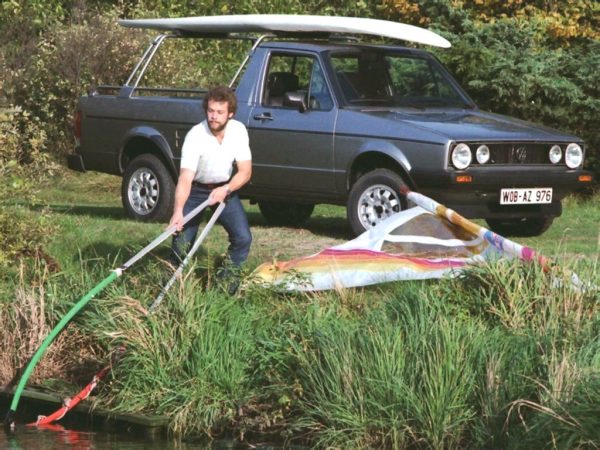
Volkswagen Caddy: model evolution, specifications, reviews
Content
Volkswagen Caddy is quite popular with Russian motorists. It occupies a worthy place in the segment of budget cars for business and leisure.
Volkswagen Caddy history
The first Volkswagen Caddy (VC) rolled off the assembly line in 1979 and was very different from today's versions.
Volkswagen Caddy Type 14 (1979–1982)
The VC Typ 14, developed from the Golf Mk1, had two doors and an open loading platform. It was the first car of its kind produced by the concern. The manufacturer offered two body options: a two-door pickup truck and a van with two seats.

Petrol (1,5, 1,6, 1,7 and 1,8 l) and diesel (1,5 and 1,6 l) engines and a five-speed manual transmission were installed on the car. Initially, the car was intended for the American market, where it received the nickname "rabbit pickup" (Rabbit Pickup). However, later VC Typ 14 became quite popular in Europe, Brazil, Mexico and even in South Africa.
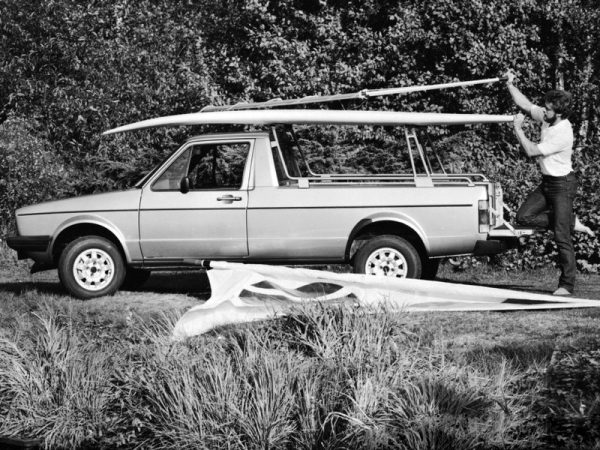
Despite the insufficiently comfortable interior for the driver and passengers, the roomy and at the same time compact car was very convenient for transporting goods.
Volkswagen Caddy Type 9k (1996–2004)
The first examples of the second generation VC were introduced in 1996. VC Typ 9k, also known as SEAT Inca, was produced in two body styles - van and combi. The second option was noticeably more convenient for the driver and passengers.
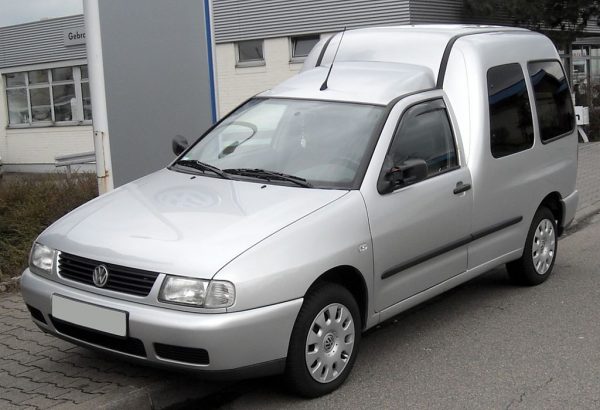
A special place in the second-generation Volkswagen Caddy line was taken by the VC Typ 9U, the first “official” pickup truck of the concern. It was produced in the Czech Republic at the Skoda factories and was supplied mainly to the markets of Eastern Europe.
The buyer of the VC Typ 9k could choose from four petrol engine options (1,4–1,6 liters and 60–75 hp) or the same number of diesel versions (1,7–1,9 liters and 57–90 hp). from XNUMX–XNUMX hp). All cars were equipped with a five-speed manual transmission.
VC Typ 9U was equipped with two types of units: gasoline (1,6 l and 74 hp) or diesel (1,9 l and 63 hp).
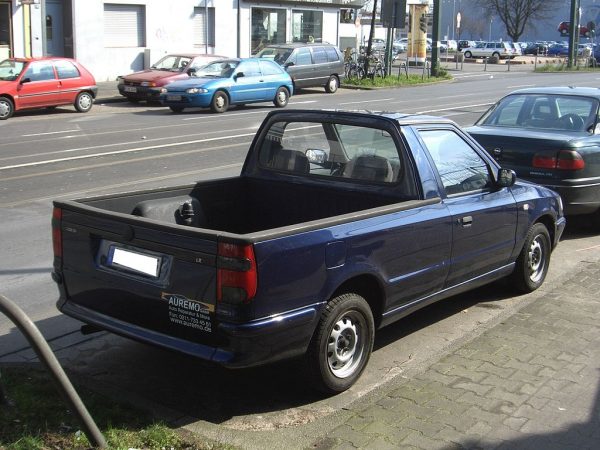
The second generation Volkswagen Caddy has established itself as an ergonomic, roomy, well-controlled and fairly economical car. Nevertheless, it was still not very comfortable for passengers, trimmed with cheap materials and had a stiff suspension.
Volkswagen Caddy Typ 2k (since 2004)
The third generation Volkswagen Caddy was presented at the RAI European Road Transport Show in Amsterdam. The body lines of the new car have become smoother, and plugs have appeared in place of the rear and rear side windows. In addition, a partition appeared between the cabin and the cargo compartment. Thanks to more ergonomic adjustable seats, the interior has become noticeably more comfortable. The carrying capacity of the new VC, depending on the modification, ranged from 545 to 813 kg. A number of options have been added to improve the safety of the driver and passengers (ABS, front airbag, etc.).
In 2010 and 2015, the third generation VC experienced two facelifts and began to look more aggressive and modern. The car is available in two body versions - van and compact MPV.

The VC Typ 2k is equipped with 1,2 liter petrol engines with a capacity of 86 and 105 hp. With. or diesel engines with a volume of 2,0 liters and a capacity of 110 liters. With.
Table: dimensions and weight of the Volkswagen Caddy of three generations
| First generation | The second generation | Third Generation | |
| Length | 4380 mm | 4207 mm | 4405 mm |
| Width | 1640 mm | 1695 mm | 1802 mm |
| Height | 1490 mm | 1846 mm | 1833 mm |
| The weight | 1050 – 1600 kg | 1115 – 1230 kg | 750 kg |
Features Volkswagen Caddy 2017
Volkswagen Caddy 2017 is noticeably different from its predecessors.

The new VC is available in two body styles - a standard five-seater or a 47 cm larger seven-seater Maxi.
Video: Volkswagen Caddy 2017 presentation
The rear seats can be easily folded down to turn the 2017 VC into a roomy van. Due to the high-lying roof, up to 3 cubic meters of cargo is placed in it. At the same time, two types of tailgates are provided - lifting and swinging. To prevent the load from moving along the body while driving, it can be securely fastened.
Video: increasing free space in the Volkswagen Caddy


Watch this video on YouTube
The ergonomics of the cabin have been improved - a cup holder and pockets in the doors have appeared, as well as a full-fledged shelf above the windshield. The latter is so durable that you can safely put a laptop on it.
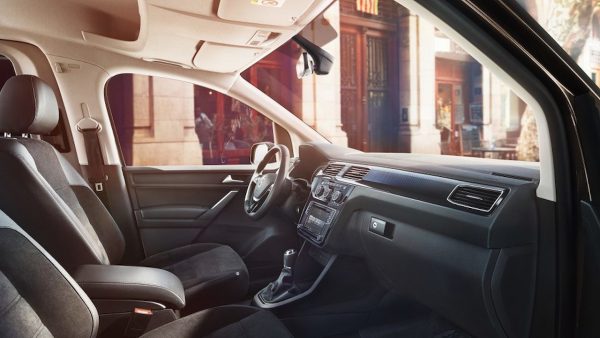

The following engine options were installed on the VC 2017:
- gasoline 1,6 l, 110 l. With.;
- diesel 1,6 l, 75 l. With.;
- diesel 1,6 l, 102 l. With.;
- diesel 2,0 l, 110 l. With.;
- diesel 2,0 l, 140 l. With.
The service life of power units has increased - the concern guarantees their uninterrupted operation with a run of up to 100 thousand km per year. In addition, the 2017 VC gets 4MOTION all-wheel drive and an innovative dual-clutch DSG transmission that combines all the benefits of a manual and automatic transmission.
The cabin has a lot of new options and fixtures. Among them:
- effective climate control system;
- modern infomedia system that can be synchronized with various gadgets;
- Travel&Comfort headrest holder, useful for small children who like to watch cartoons on their tablet on the road.
The concern also took care of the safety of the driver and passengers. For this, VC 2017 is equipped with:
- ABS and ESP systems;
- post-accident braking system;
- parking pilot.
Video: test drive Volkswagen Caddy 2017


Watch this video on YouTube
The VC 2017 is available on the market in eight trim levels:
- Conceptline (price from official dealers from 1 rubles);
- Trendline (from 1 rubles);
- Alltrack (from 1 rubles);
- Edition 35 (from 1 rubles);
- Highline (from 1 rubles);
- Comfortline (from 1 rubles);
- Beach (from 1 rubles);
- Family (from 1 rubles).
Volkswagen Caddy: choice of engine type
The buyer of the Volkswagen Caddy, like any other car, faces the problem of choosing an engine. Both petrol and diesel engines have their advantages and disadvantages.
The advantages of diesel engines include:
- Profitability. A diesel engine consumes on average 20% less fuel than a gasoline engine. This was especially true a few years ago, when diesel fuel cost noticeably less than gasoline.
- Durability. Diesel engines are equipped with a more powerful cylinder-piston group. In addition, the fuel itself can act as a lubricant.
- Environmental friendliness. Most diesel engines comply with the latest European environmental standards.
The disadvantages of diesel engines are usually noted:
- Diesels are noisier. This problem is usually solved by installing additional soundproofing.
- Diesel engines do not start well in cold weather. This significantly complicates their operation in countries with a harsh climate.
Gasoline engines have the following advantages:
- For the same volume, gasoline engines are more powerful than diesel engines.
- Gasoline engines start easily in the cold season.
The disadvantages of gasoline engines are:
- The fuel consumption of gasoline engines is higher than that of diesel engines.
- Gasoline engines cause significant damage to the environment.
Thus, when choosing an engine, first of all, one should be guided by the expected operating conditions of the car, adjusted for the usual driving style.
Possibilities of tuning Volkswagen Caddy
You can give your Volkswagen Caddy a recognizable look with the help of tuning. To do this, there is a large selection of parts and elements for sale at affordable prices.
Body tuning
You can change the look of your Volkswagen Caddy using:
- chrome elements (for example, overlays for handles costing from 1,5 thousand rubles);
- rims (from 15 thousand rubles);
- moldings (from 4 thousand rubles);
- overlays for the radiator grille (from 3 thousand rubles);
- overlays for internal sills and rear bumper (from 3 thousand rubles);
- front and rear spoilers (from 4 thousand rubles).


At the same time, lining on the internal sills and the rear bumper not only change the appearance of the car, but also protect the body from mechanical damage and corrosion, and spoilers improve aerodynamics.
Light fixture tuning
As part of tuning optical instruments, they usually install:
- LED headlights and / or taillights (from 20 thousand rubles),
- "cilia" on the headlights (from 2 thousand rubles);
- LED lighting in the cabin or trunk (from 3 thousand rubles).
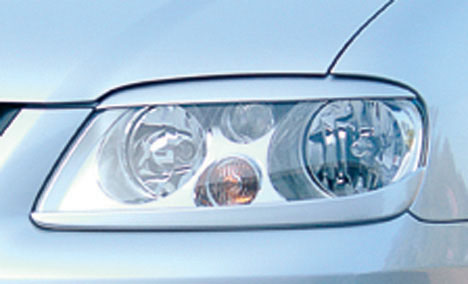

Tuning of salon
In the cabin, Volkswagen Caddy owners often install a functional armrest (costing from 11 rubles). In addition, standard floor mats and seat covers are sometimes replaced with new ones.
Reviews from Volkswagen Caddy owners
Over the entire history of the Volkswagen Caddy, more than 2,5 million vehicles have been sold. This means that about 140 thousand people become owners of new cars every year.
Most often, the reliability and unpretentiousness of VC are noted:
- the car rarely breaks down;
- the engine runs smoothly;
- fuel consumption for vehicles carrying goods is quite low.
The following points are usually indicated as claims against the manufacturer:
- low suspension;
- high noise level when driving;
- low level of comfort in the interior that warms up for a long time in the cold season.
1st year of operation in city-highway mode. The car is warm and comfortable, there are no problems at all on the track, it holds the road perfectly and the stabilization system works very well, it doesn’t go into a skid even on clean ice. Tradeline equipment, the car has everything you need, it is quite quiet, even at a speed of 130 you can talk without raising your voice, and when it is running, only the tachometer needle shows that the engine is running. Very good light headlights and tumanok. The parking sensors work great.
For a year and a half I hit 60 thousand km. If you drive economically (no more than 3 thousand rpm), the real consumption of gasoline in the city is 9 liters. I run only Lukoil 92, it digests without problems. In winter, at -37, it starts with a half turn. There is not an ounce of oil consumption.
Not even the slightest breakdown (refrigerant does not count), even the brake pads are worn out by less than 50%. High driving position. The master in the service said that the engine is the most trouble-free. In general, the city unpretentious hard worker, however, is too expensive.
The ground clearance was good, put the crankcase protection — sometimes in a rut it even touches the asphalt. The interior warms up in winter for a very long time, without a load on the engine it will not warm up at all. When you open the doors in winter, snow gets on the seats. It is problematic to remove snow from under the windshield wipers. The front doors slam hard. There is no soundproofing for the rear wheel arches, I had to come up with it myself. The back of the rear seat is made too vertical, passengers get tired on long trips. The car is purely urban, at 2500 thousand rpm the speed is only 80 km/h. As a family it is better not to buy.
Strong reliable car, not asking for too much attention, picky. Relatively fast and maneuverable, albeit a big heel. Beautiful, comfortable, interesting car. Bulky, roomy. Unbreakable car. We bought a new car in 2008, my father and brother drove 200 thousand kilometers on it. Nice car, it inspires me how much I have already left and I don’t want to change. Feels German quality.
Video: how to equip a full-fledged berth in a Volkswagen Caddy


Watch this video on YouTube
Thus, Volkswagen Caddy is a reliable, practical and multifunctional car. However, in terms of comfort, it noticeably loses to ordinary family sedans and station wagons.

